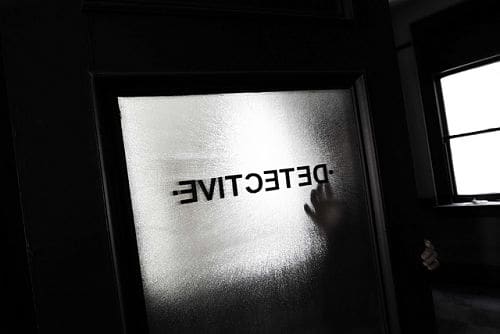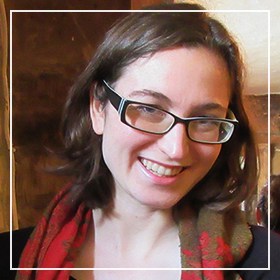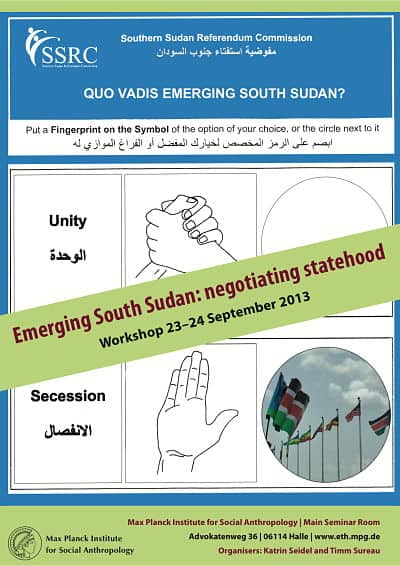“They say everyone’s born a hero. But if you let it, life will push you over the line until you’re the villain. Problem is, you don’t always know that you’ve crossed that line. Maybe it’s enough that the world thinks I’m a hero.” Jessica Jones is perhaps the zeitgeistiest character in recent TV memory. Marvel’s snarky superheroine-cum-private eye personifies our age of ambivalence, a time of neo-noir serials, Panama Papers, and protests against police violence, in which the boundaries between hero and villain, police and criminals, legality and illegality are breaking down. Similarly, the advent of the “home-grown terrorist” troubles the neat moral geographies spatially separating citizen from terrorist. This is a time in which polarizing figures like Donald Trump call for radical expansions of what is permitted in politics and policing, in the name of fear.
It is precisely this uncertainty that gives rise to an unprecedented, global preoccupation with the subject of criminality, according to Jean and John L. Comaroff, both anthropologists at Harvard.
They shared their preoccupation with the international attendees of the 3rd Maurice Halbwachs Summer Institute at the Lichtenberg-Kolleg in Göttingen, Germany (August 30 to September 3, 2016). This year’s theme, “Crime, Dis/Order, Narrative”, inspired a cornucopia of interdisciplinary contributions, spanning culture and literature studies, history, and social sciences.
Crime’s wide scholarly appeal harks back to the French father of sociology, Émile Durkheim’s, famous assertion that a society without crime would fall apart: The social order and the ideal of citizenship is defined against the disorder enshrined in criminal activity. Hence, justice and crime are mutually constitutive. Yet the Comaroffs observe that there has recently been a “tectonic shift” in the relationship between crime and its punishment, in which law enforcement appears no longer trustworthy, but rather to act in collusion with crime. So crime and punishment no longer make up separate entities, legible against one another, but rather one confusing, indivisible whole: crime-and-punishment.

In this age of hyphenation, the illegibility of illegality requires “divine detection”, as Jean Comaroff laid out in her public keynote. Drawing from her fieldwork in South Africa, she spoke about the relationship between evidentiary practice and the occult in detective work. Imagining fetishized, near-supernaturally intelligent detectives a la Sherlock both in crime literature and reality represents at once the impossibility of resolving crime, while hoping for it nonetheless: a desire to reassert the boundaries that were lost.
John Comaroff’s keynote on doppelgängers and the policing of personhood focused on a court case surrounding a Zulu singer – or rather, the person claiming his identity. He explained that impostorship is only a crime when damage can be established – and you cannot criminalize the cultural frames that legitimize practices of impersonation and multiple personhood, such as Zulu kinship role negotiations, post-colonial redefinitions of personhood, and the constant thirst for reinvention in the music industry as a form of entrepreneurial self-fashioning. At the same time, the case shines a light on the everyday lawlessness faced by South Africans, in the shape of fake policemen and plagiarism.
In other words, the making, breaking, and enforcement of the law become ways of constructing and negotiating the very nature of society.
This helps us to make sense of the Trump phenomenon, by locating his appeal precisely in his con-man persona: He is a charismatic, Gatsbyesque personification of the American Dream, who takes on the nature of the law, while showing up its limits.
As we can only access reality through narrative, the third keynote, delivered by Daniel Stein from the University of Siegen, was devoted to antebellum American city crime literature, in which the subjects of race and crime were exploited for sensational effect, attracting mass readerships. But even without a political agenda, this literature contributed to creating a sense of a racially structured social order, while simultaneously hinting at the possibility of its disordering.
Yet beyond its undeniably timely and thought-provoking theme, what truly stood out about the Maurice Halbwachs Summer Institute was its unique atmosphere: generous intellectual cross-pollination and stress-free, decelerated human encounters of the kind that allow young scholars not only to “network” self-servingly but to actually build an academic community.
Sure – the relentless sunshine, unlimited cookie supply, and quaint setting in an old planetarium of a small university town did their part. And the impeccable organizing team, as well as the initiators and speakers all went well beyond their duties. Nonetheless, several attendees expressed their surprise at just how well everybody was getting along – which sadly highlights the toxic competitiveness cultivated in many departments and conferences.

More concretely, the keynotes’ ideas were brought into an invigorating interdisciplinary dialogue throughout the five-day-duration of the Summer Institute, both in terms of formal poster presentations and group discussions, as well as informal chats over coffee and an all-day excursion to a police academy in nearby Hann. Münden and the Borderland Museum in Eichsfeld. The select group of 15 early career scholars spoke about their interests, which spanned a refreshingly wide range of topics: new surveillance technologies in Brazil, the gendered biopolitics of neoliberal governmentality in Turkey, historical discourses about rehabilitation in Germany and emotions in early Soviet criminal law, just to name a few. My own ongoing PhD research on local definitions of violence in Central Mexico greatly benefitted from swapping notes with people grappling with similar issues and subjecting myself to an initially scary, but ultimately amicable, grilling by the senior scholars.
Rather than think of interdisciplinarity as a necessary evil to fulfill funding requirements, more universities should draw inspiration from the success of this Summer Institute. The friendships, professional links, and inspiration forged here were built to last. It is not yet certain whether the next Maurice Halbwachs Summer Institute will take place in 2017 or 2018 (for reasons connected to its funding), but I wholeheartedly encourage everyone who is tempted by the theme to apply. In previous years, the themes covered “Emotion – Interaction – Violence” and “Economy between Cultural Theory and Cultural History”. Hopefully, this is just the beginning.
Featured image by Ryan McGilchrist (flickr, CC BY-SA 2.0)




